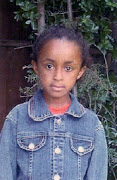People trafficking
China is a source, transit, and destination country for women, men, and children trafficked for purposes of sexual exploitation and forced labor; the majority of trafficking in China is internal, but there is also international trafficking of Chinese citizens; women are lured through false promises of legitimate employment into commercial sexual exploitation in Taiwan, Thailand, Malaysia, and Japan; Chinese men and women are smuggled to countries throughout the world at enormous personal expense and then forced into commercial sexual exploitation or exploitative labor to repay debts to traffickers; women and children are trafficked into China from Mongolia, Burma, North Korea, Russia, and Vietnam for forced labor, marriage, and sexual slavery; most North Koreans enter northeastern China voluntarily, but others reportedly are trafficked into China from North Korea; domestic trafficking remains the most significant problem in China, with an estimated minimum of 10,000-20,000 victims trafficked each year; the actual number of victims could be much greater; some experts believe that the serious and prolonged imbalance in the male-female birth ratio may now be contributing to Chinese and foreign girls and women being trafficked as potential brides.[25]
US State Department Tier rating: Tier 2 Watch List - "China failed to show evidence of increasing efforts to address transnational trafficking; while the government provides reasonable protection to internal victims of trafficking, protection for Chinese and foreign victims of transnational trafficking remain inadequate."[25]
Some western nations' hesitance to become closely involved with countries they believe to be poor in the human rights field, such as Sudan, have allowed China an opportunity for economic cooperation.[6]
2008 Tibetan protests against the Chinese powerholders -- initiated by Buddhist monks -- flared up again in 2008. The Chinese government reacted strongly, imposing curfews and strictly limiting access to Tibetan areas. The international response was likewise immediate and robust, with a number of leaders condemning the crackdown and large protests (including some in support of China's actions) in many major cities.
In a selection of speeches by the Dalai Lama published in India in 1998, he refers again to a "Chinese apartheid" which he believes denies Tibetans equal social and economic status, and furthers the viewpoint that human rights are violated by discrimination against Tibetans under a policy of apartheid, which the Chinese call "segregation and assimilation"[27]
According to the Heritage Foundation: If the matter of Tibet's sovereignty is murky, the question about the PRC's treatment of Tibetans is all too clear. After invading Tibet in 1950, the Chinese communists killed over one million Tibetans, destroyed over 6,000 monasteries, and turned Tibet's northeastern province, Amdo, into a gulag housing, by one estimate, up to ten million people. A quarter of a million Chinese troops remain stationed in Tibet. In addition, some 7.5 million Chinese have responded to Beijing's incentives to relocate to Tibet; they now outnumber the 6 million Tibetans. Through what has been termed Chinese apartheid, ethnic Tibetans now have a lower life expectancy, literacy rate, and per capita income than Chinese inhabitants of Tibet.[28] In 2001 representatives of Tibet succeeded in gaining accreditation at a United Nations-sponsored meeting of non-governmental organizations. On August 29 Jampal Chosang, the head of the Tibetan coalition, stated that China had introduced "a new form of apartheid" in Tibet because "Tibetan culture, religion, and national identity are considered a threat" to China.[29]
The Tibet Society of the UK has called on the British government to "condemn the apartheid regime in Tibet that treats Tibetans as a minority in their own land and which discriminates against them in the use of their language, in education, in the practice of their religion, and in employment opportunities."[30]



No comments:
Post a Comment